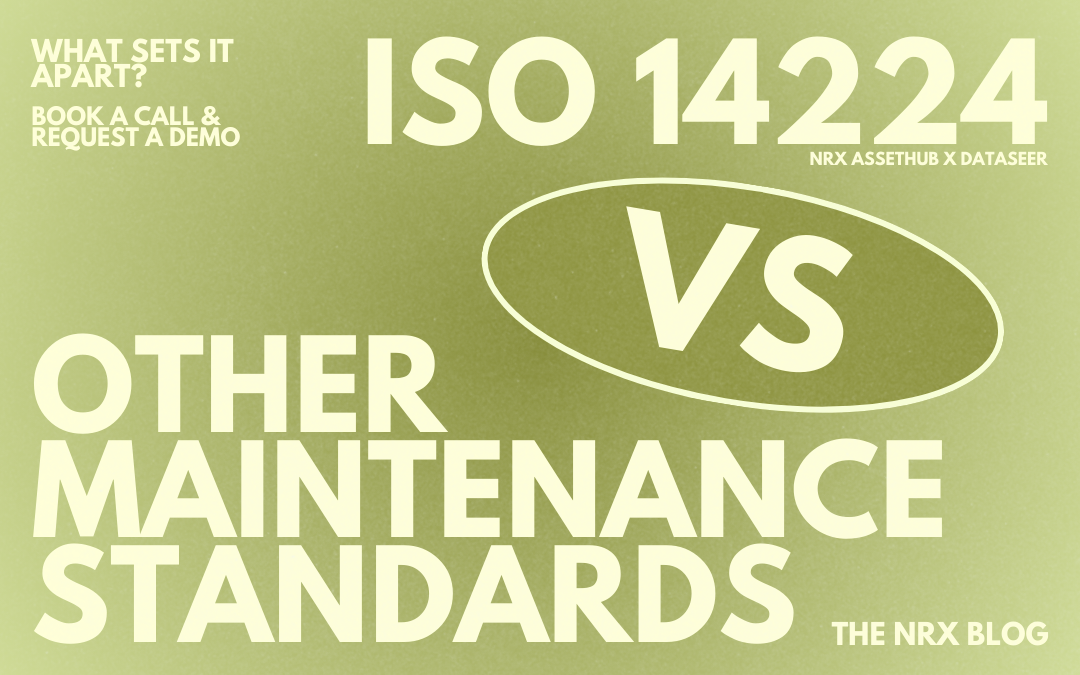A recent study found that unplanned downtime costs industrial manufacturers an estimated $50 billion annually. With stakes this high, choosing the right maintenance standard—such as ISO 14224—isn’t just important, it is essential.
Understanding the Landscape of Maintenance Standards
Industrial maintenance has become a data-driven discipline, and global standards are at the heart of this transformation. Among them, ISO 14224 stands out for its structured approach to the collection and exchange of reliability and maintenance data for equipment. While other standards such as ISO 55000, IEC 60300, and SAE JA1011 provide frameworks for asset management and reliability-centered maintenance, ISO 14224 uniquely emphasizes standardized data architecture.
Defined by the International Organization for Standardization, ISO 14224 aims to create uniform datasets to improve the reliability of EAM systems such as IBM Maximo and HxGN EAM. It covers failure data, maintenance actions, and taxonomy, while offering a level of granularity that enables companies to compare data across facilities and industries worldwide.

Key Differentiators: Taxonomy and Data Model
Where ISO 55000 provides broad principles on asset management, ISO 14224 goes more in depth by specifying how to document asset failures and events. It introduces structured hierarchies such as functional locations (FLOCs), equipment classes, and failure modes, which are vital when implementing systems or migrating to advanced CMMS platforms.
For instance, in the oil and gas sector, where downtime can cost $220,000 per hour, ISO 14224 enables better decision-making by providing standardized templates for preventive maintenance (PM) and risk-based inspections. When paired with a digital twin architecture, it creates a feedback loop that continuously refines maintenance strategies.

In the Real-World: Offshore Oil Platform
Consider an offshore drilling platform using ISO 14224 to collect data on pumps, compressors, and critical valves. By categorizing failures such as seal leaks or bearing degradation with standardized codes, they can benchmark against other rigs worldwide. The result is optimized PM schedules, improved spare part inventory planning, and increased uptime. This in turn feeds directly into EAM migration projects that aim to unify global operations under several platforms.
Integration with Digitalization Efforts
As companies embrace digitalization, ISO 14224 becomes a foundation for AI-driven insights and machine learning models. It supports asset performance management tools and predictive analytics by supplying both clean and structured data. This is a necessity when deploying digital twin ecosystems or migrating legacy data into a unified CMMS.
Unlike ISO 55000, which focuses on strategy, or IEC 60300, which addresses reliability at the system level, ISO 14224 drills down to field-level equipment insights. This bottom-up approach makes it particularly powerful when organizations need to harmonize diverse assets during CMMS migration or when integrating third-party systems post-acquisition.
Conclusion
While ISO 55000 may guide your corporate asset management vision, ISO 14224 gives you the toolkit to execute it on the ground. As asset-heavy industries move toward intelligent EAM platforms, standardized maintenance data becomes the currency of operational excellence. Overall, adopting ISO 14224 doesn’t just bring regulatory alignment, it unlocks new potential for AI, analytics, and reliability engineering.
Utilizing Drawing Data for Accurate Cost Estimation

The Challenges of Table Data Extraction

The Tedious Nature of Creating Piping Lists Manually

Share this article

